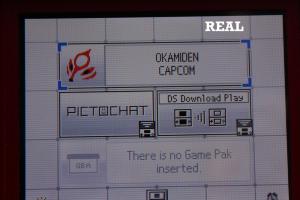Unmasking the Illusion: How to Determine if Your DS Game Is Fake

-
Quick Links:
- Introduction
- Understanding DS Games
- Common Types of Fake DS Games
- Signs of Authenticity
- Step-by-Step Inspection Guide
- Case Studies
- Expert Insights
- Frequent Mistakes When Checking Authenticity
- Conclusion
- FAQs
Introduction
The Nintendo DS has been a beloved handheld console for many gamers since its release. However, with its popularity, counterfeit games have flooded the market. This guide aims to equip you with the knowledge to distinguish genuine DS games from fakes. Whether you are a collector or a casual player, understanding how to spot a counterfeit is essential to ensure the authenticity of your gaming experience.
Understanding DS Games
Nintendo DS games come in specific formats and designs that are hard to replicate. Knowing what to look for when examining your game cartridges can save you from disappointment. Each DS game cartridge has a unique identifier, and several features that signify authenticity.
Types of DS Games
DS games can be categorized into three main types:
- Retail Games
- Promotional Games
- Homebrew Games
Retail games are commercially available titles, while promotional games are often limited releases. Homebrew games are developed by unofficial sources and may not have the same quality or design standards.
Common Types of Fake DS Games
Counterfeit DS games often mimic the original design but can have several key differences. Here are some common types of fakes:
- Reproductions: These are copies of original games, often sold at a lower price. They may include altered or poorly designed artwork.
- Bootleg copies: These are unauthorized copies that may not function properly or can damage your console.
- Modified cartridges: Some counterfeiters modify existing cartridges to include fake titles.
Signs of Authenticity
When inspecting a DS game, look for the following signs that indicate authenticity:
Cartridge Design
The cartridge should have the Nintendo logo, along with a unique cartridge shape. Authentic cartridges have a matte finish and high-quality printing.
Label Quality
Check for any discrepancies in the artwork. Authentic labels are clear and vibrant, while fake labels may appear blurry or pixelated.
Serial Numbers
Every game cartridge has a specific serial number. Cross-reference this number with official databases to confirm its authenticity.
Step-by-Step Inspection Guide
Follow this step-by-step guide to inspect your DS game thoroughly:
- Examine the Cartridge: Check the overall quality, focusing on the logo, shape, and finish.
- Inspect the Label: Look for any signs of fading, blurriness, or misalignment.
- Check the Serial Number: Use online resources to verify the serial number.
- Test the Game: If possible, play the game on your DS to check for functionality.
- Seek Expert Opinions: Consider consulting with fellow gamers or expert collectors if you are unsure.
Case Studies
Understanding real-world examples of counterfeit DS games can enhance your knowledge. Here are a few notable case studies:
Case Study 1: The Counterfeit Pokémon Game
A collector purchased what they believed to be a rare Pokémon game, only to discover it was a counterfeit. The cartridge lacked the official Nintendo logo and had a poor-quality label. This case highlights the importance of inspecting every detail.
Case Study 2: The Bootleg Mario Kart
Another gamer bought a bootleg copy of Mario Kart DS. The game did not save progress and eventually corrupted their DS. This incident serves as a warning about the potential risks of fake games.
Expert Insights
To bolster your understanding, we consulted gaming experts for their insights on identifying fake DS games:
"Always buy from reputable sellers. If the price seems too good to be true, it probably is." - Mark Thompson, Gaming Historian
"Educate yourself about the specific games you’re interested in. Familiarity with legitimate copies is your best defense." - Lisa Chen, Retro Game Collector
Frequent Mistakes When Checking Authenticity
Many gamers make common mistakes when trying to verify the authenticity of their DS games:
- Relying solely on the price to determine authenticity.
- Not checking the cartridge's physical features.
- Ignoring online resources for verification.
Conclusion
Identifying fake DS games requires diligence and knowledge. By following the steps outlined in this guide, you can protect yourself from counterfeits and ensure your gaming collection remains authentic. Remember to stay informed and consult experts when in doubt.
FAQs
Here are some frequently asked questions regarding identifying fake DS games:
- How can I tell if my DS game is fake? Look for discrepancies in the cartridge design, label quality, and serial number.
- Are fake DS games harmful? Yes, they can damage your DS and may not function properly.
- Where can I verify a game’s authenticity? Use online databases and forums dedicated to gaming collectibles.
- What should I do if I bought a fake game? Contact the seller for a refund and report the listing if necessary.
- Can I still play a fake DS game? Some may work, but functionality is often unreliable.
- Are there specific sellers to trust? Always purchase from reputable websites or certified retailers.
- How do I spot a reproduction cartridge? Reproductions often have lower-quality finishes and may lack serial numbers.
- Is there a market for fake games? While some collectors seek reproductions, most prefer authentic copies.
- What are the most commonly faked DS games? Popular titles like Pokémon and Mario Kart are frequently counterfeited.
- Can I find resources to learn more? Yes, gaming forums and websites dedicated to retro games are excellent resources.